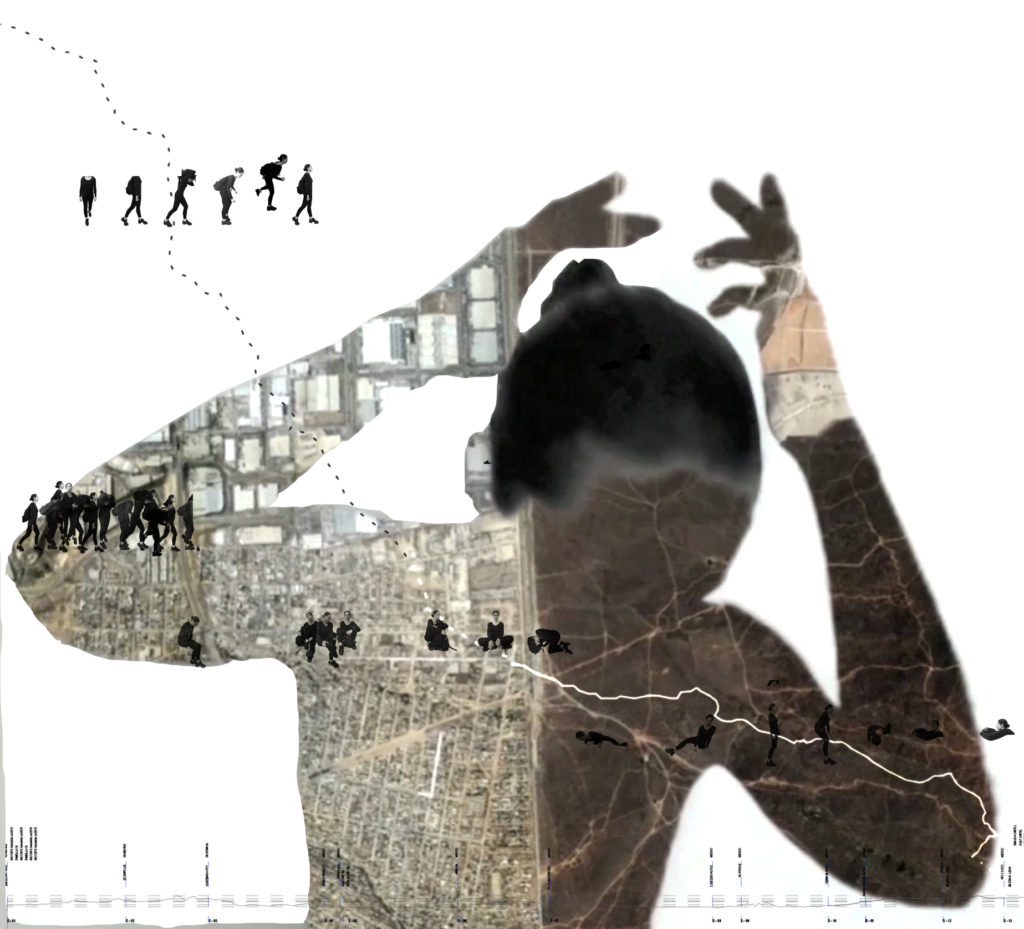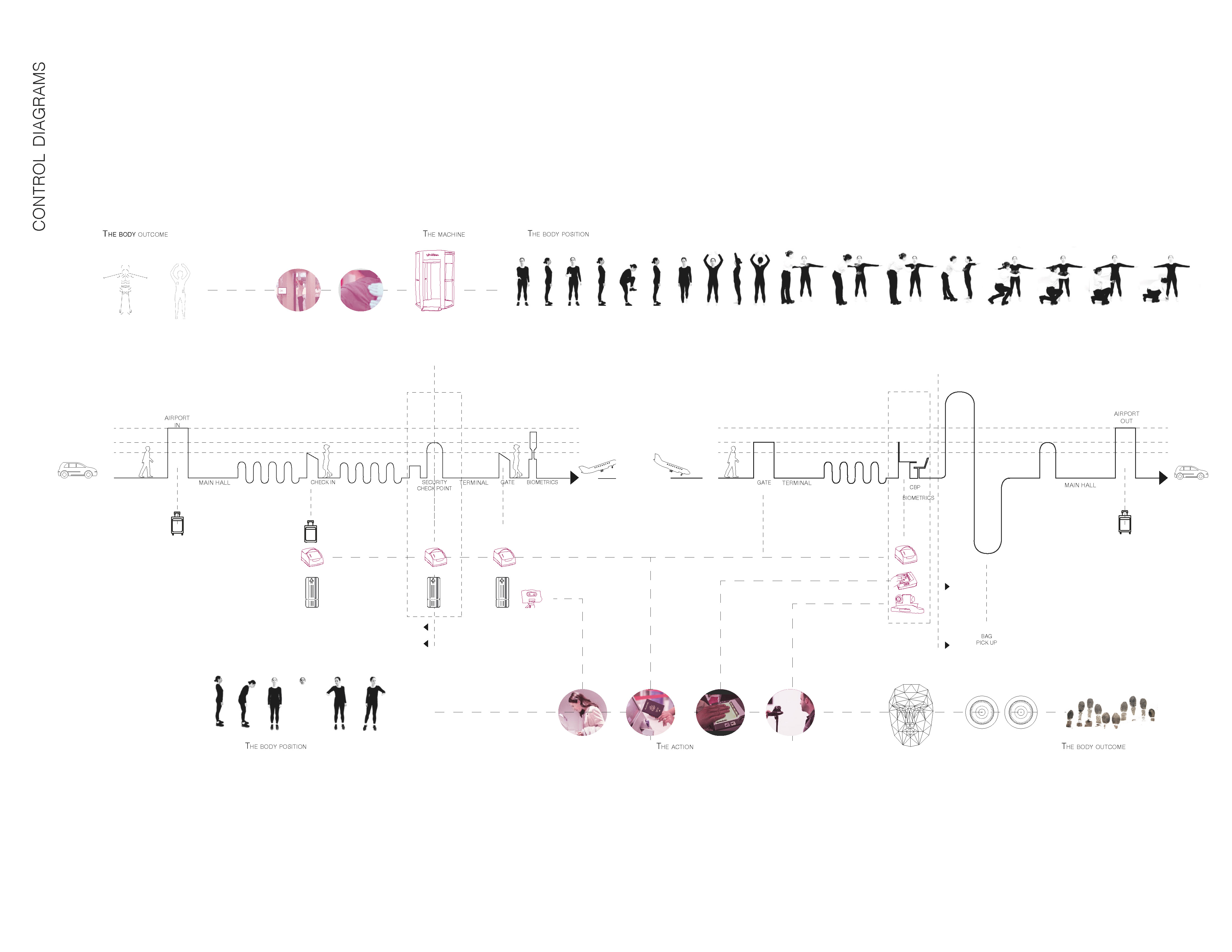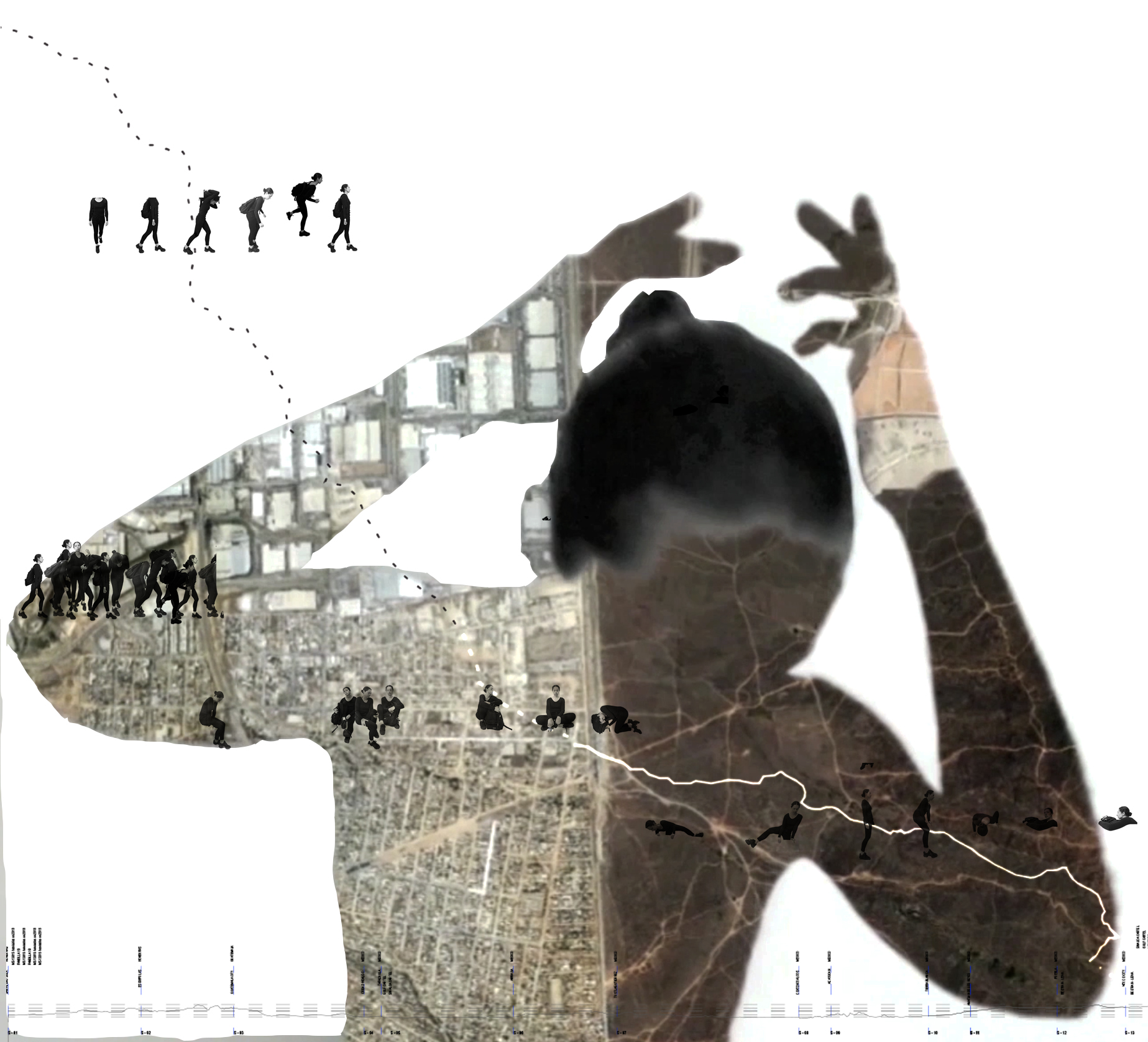
Border Choreographies – Interdisciplinary GSD Project about Mexico-U.S. Border Featured at 2021 Venice Biennale
Border Choreographies: Identity, Body, and Personhood
Borders are dynamic and complex systems. This research examines the procedure of crossing an international border by a human being. The main objective is to delineate how a body is addressed, controlled, and deconstructed when crossing a political boundary. It also explores the subjectivity of the border beyond its material conception and imagines a political line in its human dimension.
By using existing data on crime, landscape, transport, solidarity networks, technology, testimonies, and photographs, these diagrams replace traditional western maps in order to reveal the true journey of immigrants from one state to another by air, land, and sea. For each case, we chose specific examples of migration in which violence, abuse, and transformation are deeply present. These include air and the land crossings.
In the case of air we focused on U.S. airports, considering the present rigid security policies. In the case of migrations by land, we examined the ways in which the Mexican territory on the Mexico-U.S. border acts as a corridor for informal crossing from the South to the North.For the formal movement by air, permission to cross a border requires individuals to be identified, registered, and documented. The human is recognized from identification documents, as well as face, retina, iris, and fingerprints scanning patterns which are compared within algorithms linked to national, or international, administrative and security databases. Gender, ethnicity, race and/or nationality classifications can lead to different crossing experiences and expose systemic discriminatory practices.
In the informal land crossing, the body intensely engages in multiple actions while facing unpredictable dangers such as crime, violence, or extreme landscape/climate conditions. Multiple and diverse bodies shape the informal migration routes and create networks of mutual aid and support to survive, Together, they consolidate an entity.
To engage with these two types of body conditions, we deploy choreography as a form of Corporal investigation, focusing on its movements and representation. The body is completely reconstructed at the borders and both the formal and informal crossings provoke violation and transformation. This analysis delivers a sequence of movements, a choreography, delineating the traumatic experience of a body subdued to border control. In doing so, it questions how migration impacts identity, body, and personhood.
17th International Architecture Exhibit at Venice Architecture Biennale 2021
Adriana, Eva, and Maria presented their research at the 17th Venice Architecture Biennale 2021 for the CITYX Venice Italian Virtual Pavilion. Directed by Krzysztof Wodiczko and Malkit Shoshan, their video ‘Border Choreographies’ is an attempt to reveal the blurred but deeply rooted link between body, personhood, identity, and the territory that is traversed when crossing a border. It is a human-scale view into a profoundly exploited frontier, overflowing with life stories, violence, abuse, conflict, but also solidarity and hope.Link to the video: https://www.youtube.com/watch?v=3zy-8462qLY
Link to the virtual Biennale: https://cityxvenice.org/
About the Authors
Maria Gracia, San Martín
Maria Gracia San Martin is a Chilean Architect and currently a Master in Architecture II and Master in Design Studies (Art, Design, and the Public Domain) candidate at Harvard GSD, and holds a Bachelor of Arts in Architecture from Catholic University of Chile (2017). Her approach to architecture and design engages with theories on performance, visual culture, and human rights reparations. She has been awarded with Harvard GSD International Grant (2019 – 20) and Becas Chile (2019-21), and was finalist at Young Architects Program CONSTRUCTO (MoMA PS1, 2019) and Archiprix PUC (2018). She has also worked as a teaching associate at Harvard and PUC, and has lectured at School of Visual Arts in New York, and the Chilean College of Architects, among other institutions.
Instagram @mariagraciasanmartinriutort
Eva Lavranou
Eva Lavranou is a Greek architect. She is pursuing a Master in Design Studies degree (Art, Design, and the Public Domain) at Harvard GSD (2022). She has previously studied architecture at the University of Thessaly, Greece (2018) and at the Politecnico di Milano (2014-15). Her research focuses on the intersection between architecture and art having as an objective to bring freedom and inclusivity into the public space. She investigates the ever-changing models of inhabitation and the quest for identity in today’s globalized and technological society. Her interests include curation, exhibition work, public space installations, and set design. She is also a curator at Harvard GSD’s Kirkland Gallery.
Instagram @eva_lav
Adriana David
Adriana David is an architect from Mexico City. She holds a Master in Design Studies degree (Art, Design, and the Public Domain) from Harvard GSD. Her work lies at the intersection of architecture and the natural world. Her research focuses particularly on Food Sovereignty as a mechanism to restore the broken bond between human beings and nature. She is continuously exploring multidisciplinary approaches to engage with environmental health through public space. Her recent projects include LIMBO urban seedbanks, a choreography for a more-than-human world, a performance dinner on the impact of today’s impact of agribusiness on food, and a set of tools to achieve Harvard’s Food Sovereignty for the future. Adriana is a recipient of the Harvard Mellon Urban Initiative Grant (2021).
Instagram @adrianadom






